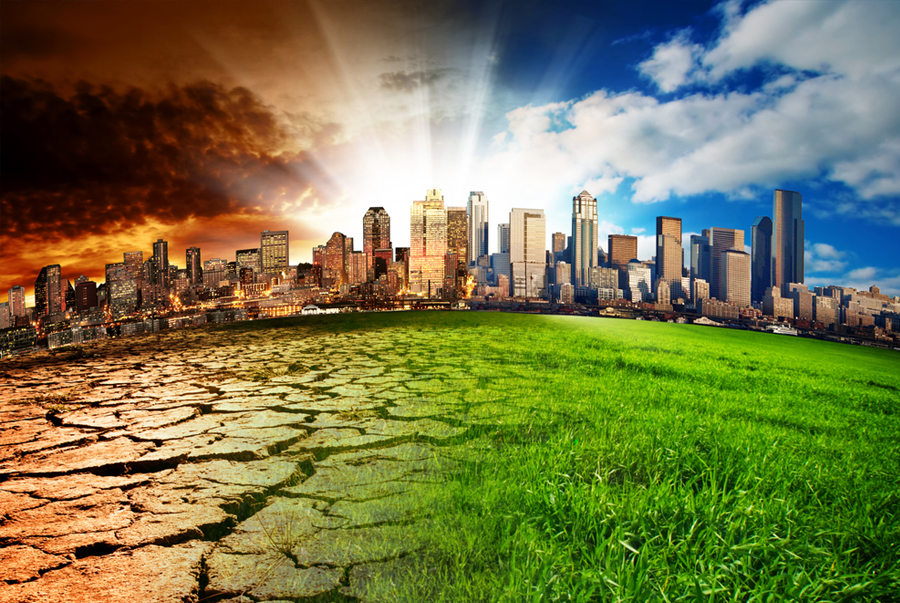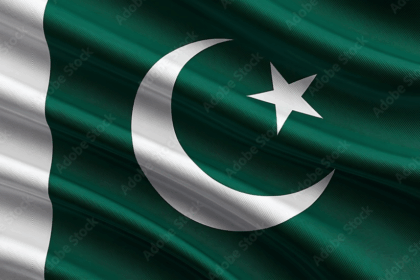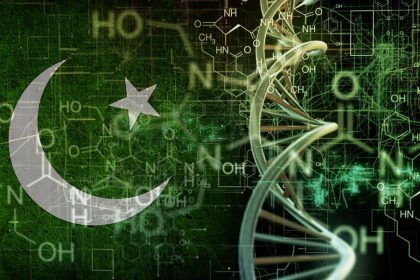Hi readers! Hope you are now clear about what is and is not climate change? As the maps in the previous blog exhibited, the so-called climate change is giving us a HOPE and OPPORTUNITY. It is not at all a disaster. Let’s see how?
We all know that agriculture is the main component of global food security, hence, anything affecting our agriculture is considered a direct threat to our food security. Agriculture, however, is beset with several challenges. For example, by 2050, the global population will reach 8.9 billion (40% increase) and per capita food consumption will rise above 3100 Kcal per day (Figure1), which means 70% increase in agricultural productivity. This is not possible from the available 1600-1680 Mha of cultivable land which is not sufficient to produce the requirement of 40% increased population, hence 90% of the required increase will come from intensifying farming practices and higher yields

From 1960 till to date, crop yields have increased globally by 77% just by exploiting the genetic potential which has largely been exhausted and required re-evaluation because many varieties currently are producing only 30-35% of what is agro-ecologically attainable under comparable environments.

It is largely believed that climate change has aggravated the situation as is shown in Map 1. (These maps have been shown in the previous blog but are being re- produced here for ready reference) which exhibited a reduction of about 25% in agriculture productivity by 2050 which obviously is a disaster.
Not only this, but data also indicated that per capita calories consumption (Figure 1) compared to the year 2000 will increase up to 2050 (need to meet this increased demand) in the absence of climate change and will reduce in the wake of climate change (need to meet the demand of this reduction as well: thus, the challenge will be of two fold significance). This reduction would be more for sub-Saharan Africa because it is below the threshold level of the minimum 2300 Kcal per capita as suggested by the World Health Organization (WHO). South Asia is also being affected but, climate change induced reduction in calories will still be in the range of 2300-2500 Kcal per capita which is the safe limit. The picture is true (with non-significant difference) for the both the models of CSIRO, and of NCAR. Similarly, consumption of Meat (Figure 2) and Cereals (Figure 3) will also increase if there is no climate change but both CSIRO and NCAR indicated significant decrease especially for sub-Saharan Africa if there is a climate change. South Asia is will also be affected but still within safe limit. Thus, climate change (if any) will prove a bit disastrous for sub-Saharan Africa.

The other side of the picture however, exhibited100-200 mm more rain in the areas some of which are presently not under cultivation (Map 2 & 3) especially in the southern parts of the country, and we have been witnessing this prediction for the last one decade.
Is this not an opportunity? And if yes, why not to use it?
But before that, we must realize that Pakistan’s economy is pre-dominantly agrarian in nature with 20.2% in 2020-21 which declined to 18.8 in 2121-22. Despite the fact that our wheat, rice, and sugarcane production has significantly increased yet the share of agriculture has declined due largely to very poor performance of cotton that was cultivated on reduce area than usual, with poor quality of seeds and inadequate amount of irrigation water.
Pakistan is now desperately looking for the ways to increase the share of agriculture in the GDP. However, Figure 4 (Source data: World Bank group 2022; https://data.worldbank.org/indicator/NY.GDP.MKTP.KD.ZG?locations=PK&name_desc=true) indicated checkered history of GDP spanning over 60 years during which it crossed the landmark of 10% only four times. It was 10.4% in 1965 (war year); 11.4% in 1970 (a year before war); 10.2% in 1980 (a year after Soviet Union invaded Afghanistan) and 18% in 1993 when Nawaz Sharif was ousted from the office of Prime Minister of Pakistan. In 2020, country’s GDP remained at the lowest ebb (-1.3%) for the first time in 60 years and that was the peak covid time. Data from Economic Survey of Pakistan shows that during 2022, it went up again to 18.8% but it remained to be seen.

The government is now emphasizing on enhancing productivity to ensure food security, efficient import substitution and export orientation to increase foreign exchange earnings meaning thereby that an increase in GDP is urgently required especially through increasing agricultural productivity.
The question is how we can enhance the share of Agriculture in GDP?
Have we ever realized that we have an ill-conceived idea of perceived climate change as a total mess and disaster, whereas it can be a blessing and a hope as well?. Have we ever considered this factor? Certainly not.
- We have invested huge amount of foreign exchange to import edible oil and even cotton. Whereas we can use areas presently not under cultivation to increase production of cotton and oil seed crops? We can change the production areas of chickpea and wheat as well.
- Have we ever tried to change our pattern of agriculture? Off course not.
- We can get the help from modern biotechnology to make crops positively responsive to changing environment. For example, CRISPR/CAS technology. Are we using it elaborately? Of course, Not.


The gravity of the situation, therefore, demands that we must respond to these challenges positively to set the vision for future of agriculture and direction for agricultural research.
For using the Hope and Opportunity in perceived climate change, we need to change the pattern of agriculture. Just one very crucial example,
Edible oil is one of the largest import in the country after petroleum product? Total oil availability during 2021 remained at 3.214 MT to which, local contribution was only 0.460 MT. The deficit is 2.764 MT. We are spending huge amount of foreign exchange of about 3.681 billion US dollar to bridge this gap
Can we afford this? Certainly Not
Can we increase productivity? Yes, we can

We only need:
Land which according to FAO is 22.10 Mha as potentially cultivable whereas about 6.30 Mha is saline (total 28.40 Mha). World Data Atlas, however, says that it is 30.93 Mha in 2020. Additionally, we have 0.8Mha area under Grater Thal Canal (GTC),0.41Mha under Kachi Canal (KC) and 0.17Mha under Rainee Canal (RC).
Water which according to Times Agriculture (https://timesagriculture.com/agriculture-and-water-resources-situation-in-pakistan/) is 63 Million Acre Foot (MAF) surface water and 43MAF ground water (total 106MAF of water). Also, 8500 cusecs water is available in GTC (taken off from Chashma Jhelum link canal and passes through Khushab, Bhakkar, Layyah and Jhang Districts in Punjab, providing crop benefits of 5.58 billion annually. This is 35 km, long canal with water capacity of 8500 cusecs).
In addition to this, 6000 cusecs are available in KC (taken out from Taunsa Barrage and passes through DG Khan, Jampur, Bhakkar and, Rajanpur, enter into Baluchistan at Sui, passes through Dera Bugti, Naseer Abad, Jhal Muggsy up to Ghous Abad. A 400 KM long canal can irrigate about 71300 acres).
Baluchistan and Southern Punjab are now a days beset with torrential rains (predictions are about 100-200mm more rain up to 2050): more than sufficient to fill GTC and KC provided we have the vision to use these resources. Another 5155 cusecs in Rainee canal (taken out of River Indus at Guddu Barrage passes through Ghotki, Sukkur, and Khairpur districts of Sind. A 175 km long canal can irrigate 412000 acres of land) are available which can be used.
Manpower which according to world Bank data was 37% up to 2019 which have been reduced in 2021-22 as most of the people are migrating to big cities in search of jobs but additional activity can be generated in newly irrigated areas falling under GTC, KC and RC which can again increase this manpower to be used for agricultural activities.
Are we using all these available resources judicially? Certainly not.
This is hope and opportunity and let see how we can use it?
The area in the command of GTC, KC and RC can be used for cultivating Rapeseed, Cotton, Canola, and Sunflower.
The current area under oilseed crops is 2.04 Mha (author’s calculation from Economic Surveys of Pakistan 2021-22.)
Current production (seed) is 5.073 MT
Current production (oil) is 0.374 MT (11.64% of total consumption)
Current demand 3.214 MT
Current production 0.374 MT
Deficit 2.84 MT or
(98.3% of total consumption which is being imported at the cost of 3.681 billion US$ as per Economic Survey of Pakistan 2021-22).
If we use areas under the command of GTC, KC and RC, for cultivation of oil seed crops and use 1Mha of slightly saline soils for cultivation of salt tolerant crops like Sunflower and Brassica (Raya Anmol can grow at EC8-35dS m-1, pH 8-9.37 and SAR 15-31.
Total available oil could be 1.293 MT instead of 0.374 MT
Local consumption: 3.214MT
Locally availability: 1.293MT instead of 0.374 MT
Deficit:1.921 instead of 2.84 MT (44.49%)
Which means 40% instead of current 98.3% would be met locally
Huge saving of foreign exchange and impact on GDP isn’t, it?
We can use the same strategy to increase wheat production and the extra wheat (after meeting 26MT of local demand) can be legally exported to Afghanistan instead of illegal smuggling
provided we give priority to national over personal interests.
What do you think dear readers? Pl. do let me know through your comments and feedback
Take care and I will see you next week with
Who is the culprit in perceived global warming
Water vapors or cement industry?
Bye.





